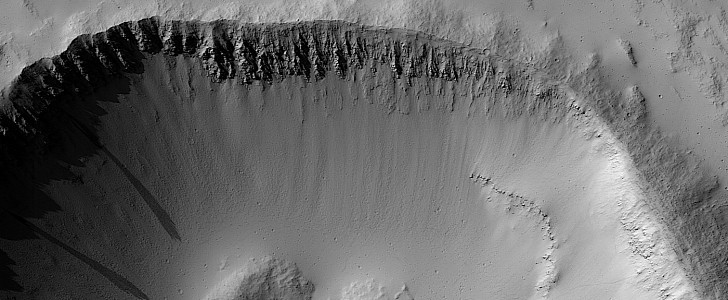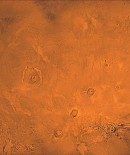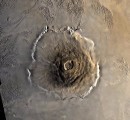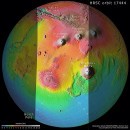There are not many things going on on Mars these days. Sure, a number of human-made motorized contraptions move about the place, trying to unlock its secrets with cameras and drills, but other than that, the planet itself is as dead as it gets.
The neighboring rock has no plant life to track seasons, no animal life to track liquid water, no intelligent life to answer our questions. That leaves very little for scientists to use as they try to get a better understanding of the place, and most of the time that means looking at rocks, dust, and impact craters.
Luckily for us, that’s usually enough for the smart brains here on Earth to understand what’s going on, even by using one feature to learn about another.
Take this photo here, for instance. It was snapped by the HiRISE camera in orbit around the planet back in June, from an altitude of 269 km (167 miles), and it shows a part of an impact crater on the flank of Ascraeus Mons, in the Tharsis Plateau region.
Now, the fact this is a crater is not particularly impressive, as there’s plenty of those on Mars. What’s impressive is that scientists use this crater to learn more about “the nature of the volcano’s flank materials.”
Also, when looking at “the materials exposed in the crater walls, we can gain more information about the subsurface,” the scientists say.
Ascraeus Mons is part of a network of three shield volcanoes that make up Tharsis Montes, the other two being Pavonis Mons and Arsia Mons. It is 480 km (298 miles) in diameter, and has a caldera 24 km (15 miles) across and over 3.2 km (2 miles) deep. Reaching 18.1 km (11.2 miles) at the summit, it’s the second highest mountain on the planet.
Luckily for us, that’s usually enough for the smart brains here on Earth to understand what’s going on, even by using one feature to learn about another.
Take this photo here, for instance. It was snapped by the HiRISE camera in orbit around the planet back in June, from an altitude of 269 km (167 miles), and it shows a part of an impact crater on the flank of Ascraeus Mons, in the Tharsis Plateau region.
Now, the fact this is a crater is not particularly impressive, as there’s plenty of those on Mars. What’s impressive is that scientists use this crater to learn more about “the nature of the volcano’s flank materials.”
Also, when looking at “the materials exposed in the crater walls, we can gain more information about the subsurface,” the scientists say.
Ascraeus Mons is part of a network of three shield volcanoes that make up Tharsis Montes, the other two being Pavonis Mons and Arsia Mons. It is 480 km (298 miles) in diameter, and has a caldera 24 km (15 miles) across and over 3.2 km (2 miles) deep. Reaching 18.1 km (11.2 miles) at the summit, it’s the second highest mountain on the planet.







